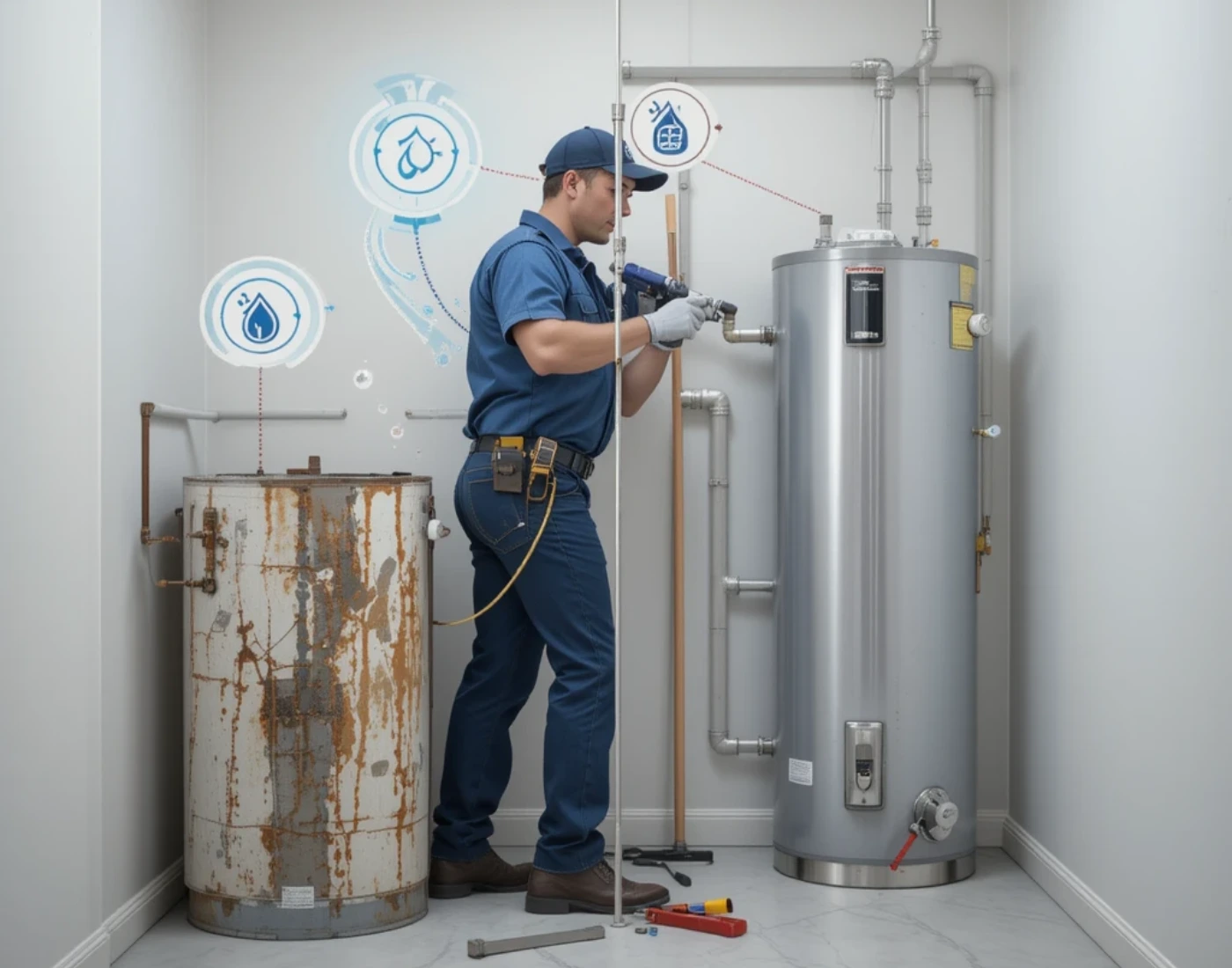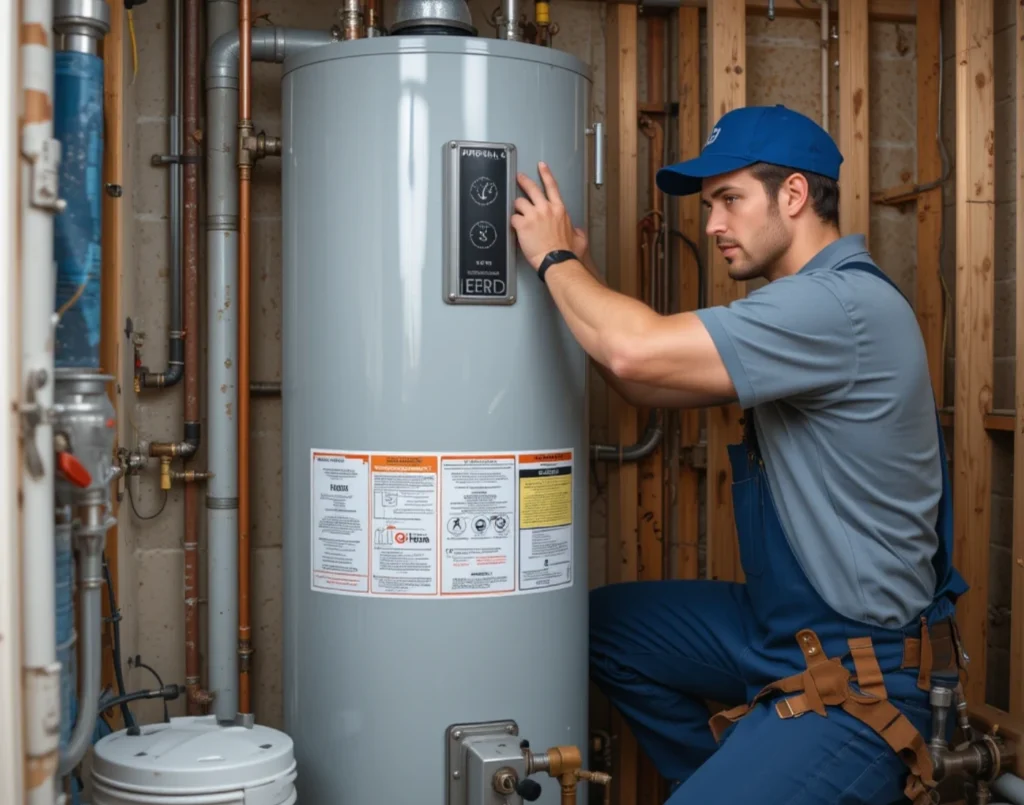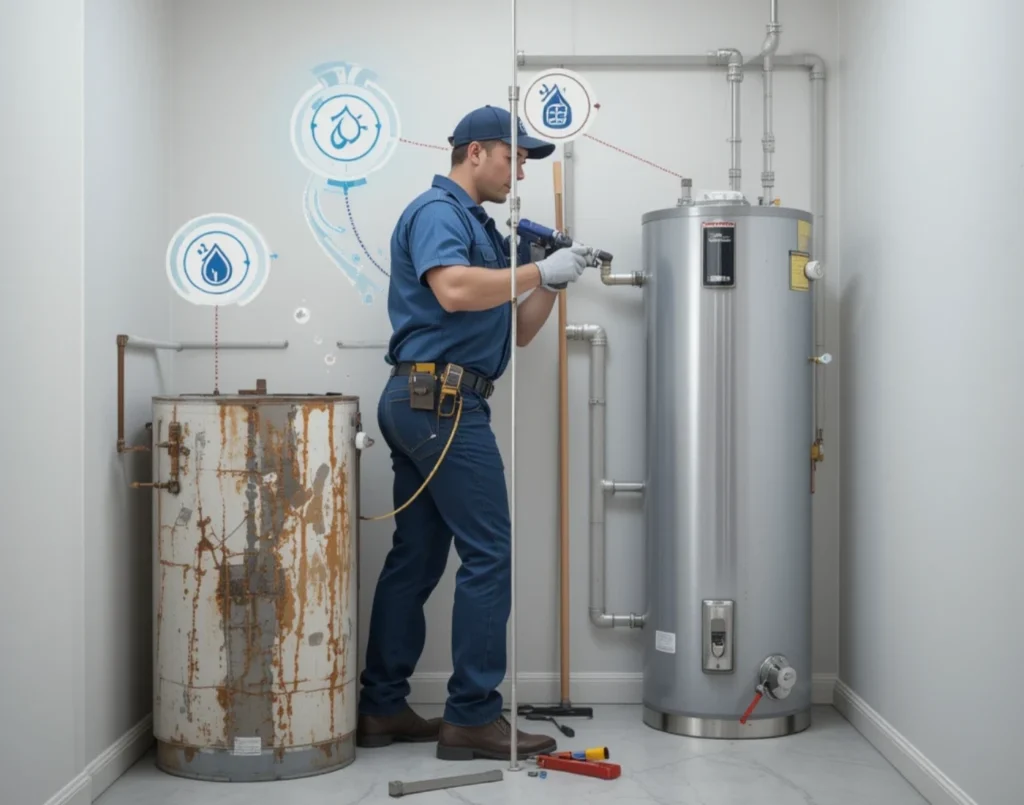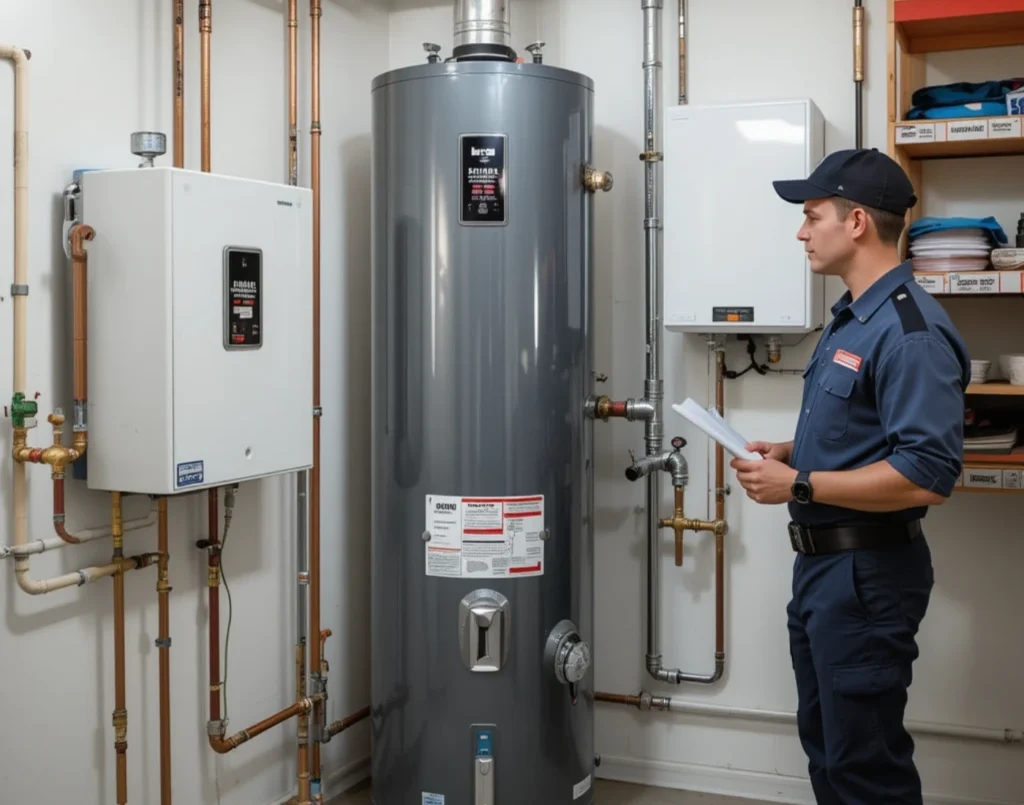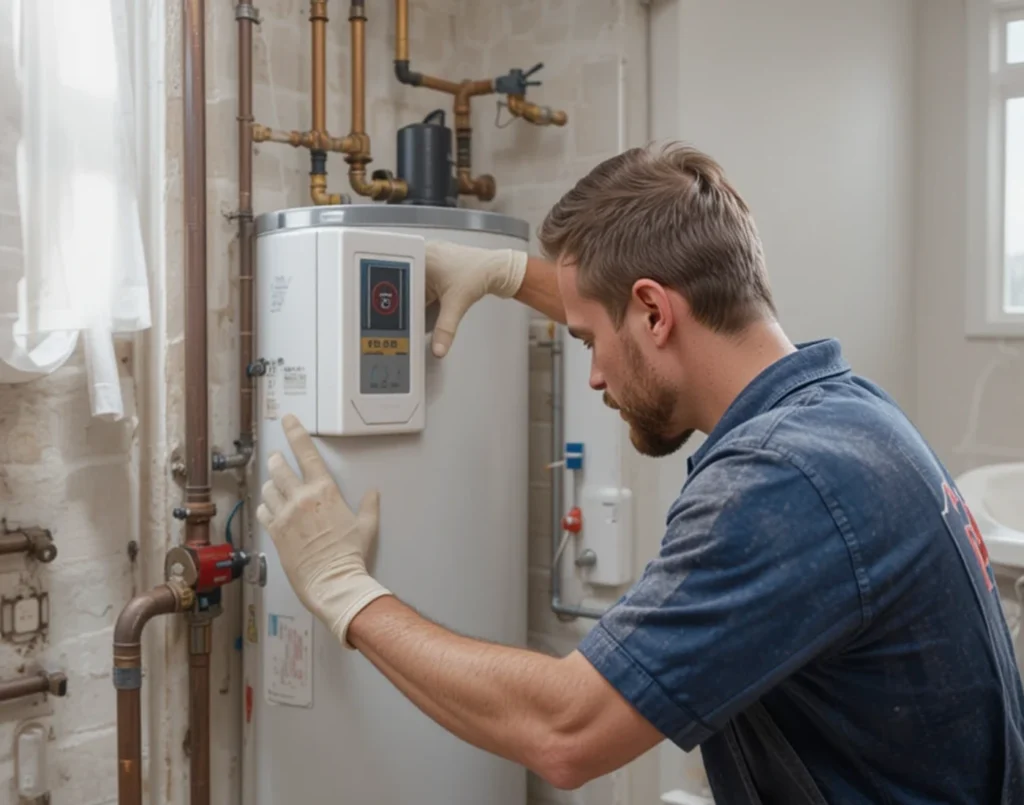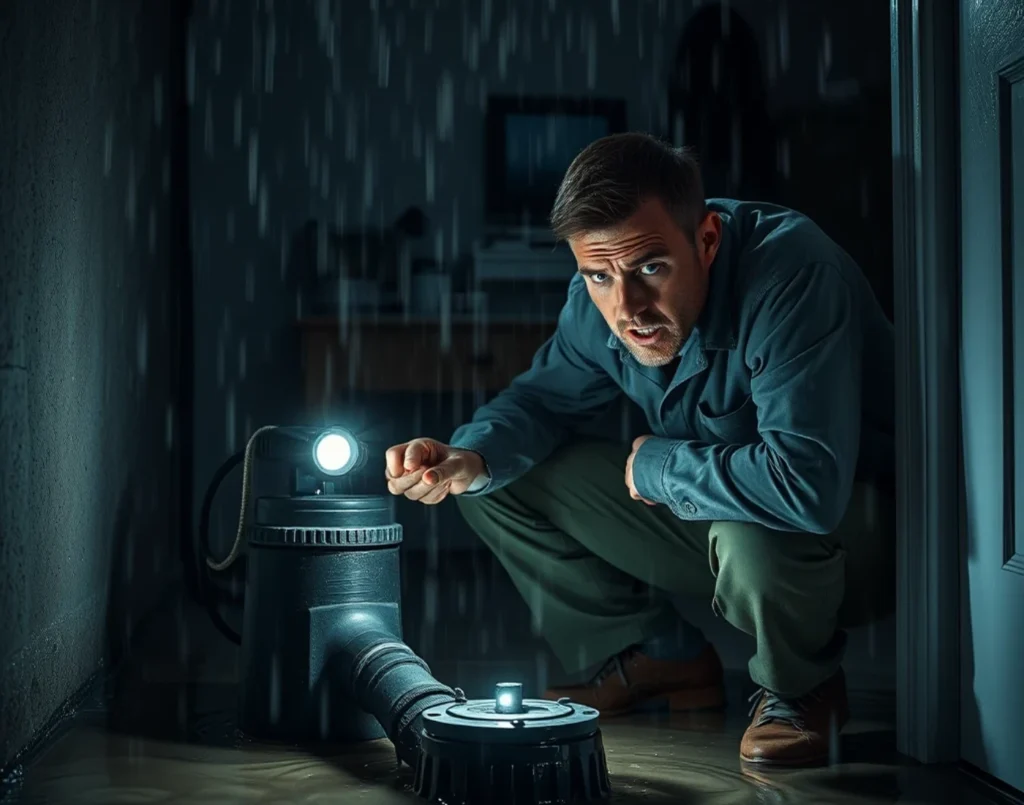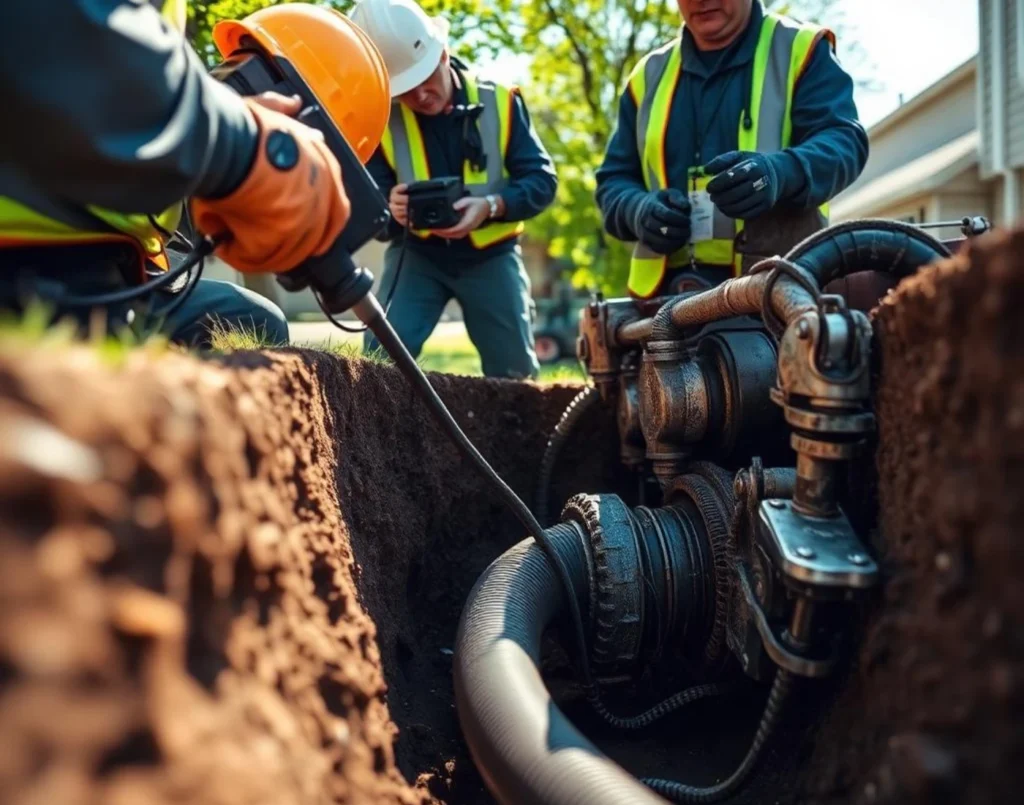Plumbing upgrade signs are crucial indicators that your pipes need attention or replacement. Knowing when to replace your plumbing can prevent significant damage and costly repairs. Common signs include frequent leaks, low water pressure, and the age of the pipes. Identifying these issues early helps ensure a smooth plumbing system and avoids emergency repairs. Understanding these signs will help you take action before problems become more severe.
If you’re experiencing frequent leaks, low water pressure, or old pipes, it may be time for a plumbing upgrade. Addressing these signs early can save you money and improve your home’s plumbing system.
Understanding Plumbing System Age
- Home plumbing systems usually last 20 to 50 years. This depends on the quality of materials and maintenance.
- Many homes built before 1980 have galvanised steel pipes. These pipes can corrode over time. This corrosion slows down water flow.
- Older structures frequently include cast-iron pipes. They usually last about 25 to 35 years. After that, they may begin to rust or break down inside.
- Older materials were common in the past. However, they lack the reliability and safety of modern piping options.
- The age of your water heater is also a key factor in your plumbing system’s performance.
- Traditional tank water heaters typically last 8 to 12 years before they need to be replaced.
- Tankless water heaters can last up to 20 years. This is especially true if you maintain them regularly.
How do you spot ageing plumbing?
Frequent Leaks
Recurring leaks signal that your pipes have reached the end of their useful life. Small drips from faucets may seem small, but they can show bigger issues. They frequently indicate that your system has pipe corrosion.
- Check under sinks often for water stains or dampness. These could mean slow leaks.
- Monitor water meter readings when no water is being used to detect hidden leaks
Low Water Pressure
Low water pressure in your home may mean that mineral buildup or corroded pipes are blocking the flow. Water damage and repair costs can be decreased by identifying warning signs early.
Multiple fixtures experiencing simultaneous pressure drops indicate system-wide issues rather than isolated problems. Your morning shower shouldn’t feel like a light mist. You need enough water to rinse the shampoo from your hair.
Discolored Water
Rusty or brown water means pipes are corroding. A yellow tint usually shows mineral deposits. These stains can mark clothes and fixtures. They can also change the taste of your drinking water. Green stains around fixtures suggest copper pipe corrosion. This issue is worse in places with acidic water. Clear water that turns brown when heated typically indicates water heater tank deterioration.
What are the hidden costs of old plumbing?
Escalating Water Bills
Ageing pipes waste water through small leaks that may not be immediately visible. Even small leaks can waste hundreds of gallons each month. This can really raise your utility bills.
- To find your baseline usage, compare your bills from the same months in past years.
- Monitor seasonal variations to identify unusual spikes in consumption
- Check for running toilets and dripping faucets that contribute to waste
- Think about smart water sensors that notify you of odd usage trends.
Unusual Noises from Pipes
Water hammer, banging, or whistling sounds mean there are pressure issues or loose pipes in your walls. These noises often worsen over time and can lead to pipe joints failing. Gurgling sounds from drains suggest blockages or ventilation issues that can cause backups. The sound of running water when no fixtures are in use points to hidden leaks requiring immediate attention.
Rusty Fixtures
Corroded fixtures reflect the condition of your entire plumbing system. Rust stains around pipe connections, valve handles, and faucet bases indicate advanced deterioration.
Mineral deposits create white, chalky buildup around fixtures and reduce their lifespan. These deposits also harbour bacteria and create maintenance challenges that worsen over time.
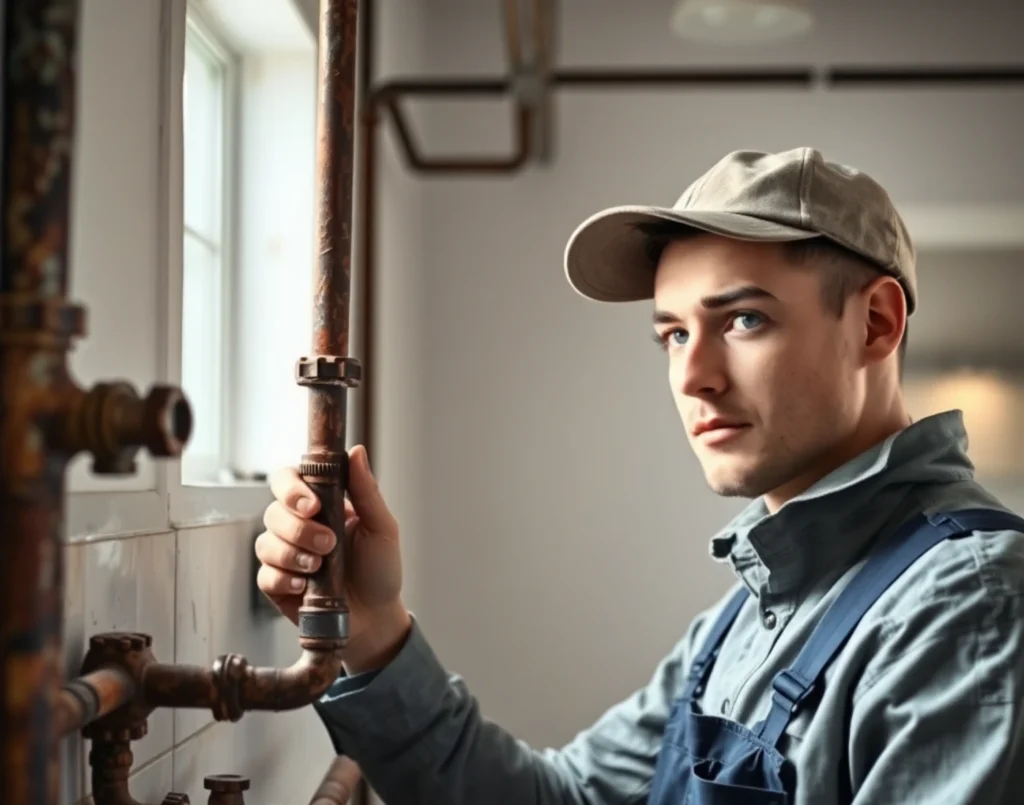
Are there health and safety concerns?
Water Quality Issues
Old plumbing pipes can contaminate your water, introducing rust, mineral deposits, and harmful bacteria into your home’s water supply. Lead pipes, still found in some older homes, pose significant health risks, especially to children. Galvanised steel pipes often develop internal rust, affecting the water’s taste and colour. This corrosion creates an environment where harmful bacteria can thrive, putting your family’s health and safety at serious risk. If you have old plumbing pipes, it may be time to consider an upgrade to protect your home’s water quality and your family’s health.
Potential Health Risks
Contaminated water can cause digestive issues, skin irritation, and long-term health problems. Mould from ongoing leaks can harm health. It’s especially risky for family members with asthma or allergies.
- Test your water annually for lead, bacteria, and chemical contaminants
- While planning renovations, temporarily install water filters. Fix leaks right away to avoid mould growth and structural damage.
- Consult health professionals if you notice any unexplained symptoms.
Benefits of Upgrading Your Plumbing
Cost Savings
Modern plumbing materials last longer and require less maintenance than older systems. New fixtures and pipes reduce water waste, lowering monthly utility bills significantly. Emergency plumbing repairs can be expensive. They can cost thousands, especially if there’s water damage to floors, walls, or personal items. Planned upgrades cost less than emergency replacements and prevent collateral damage.
Improved Water Pressure
New pipes that are wider and smoother provide consistent water pressure in your home. Modern fixtures optimise flow rates while using less water than older models. Higher pressure makes daily tasks easier. Showering, washing dishes, and doing laundry become more enjoyable. Your local pool maintenance company likes steady water pressure when filling or topping off pools.
Increased Home Market Value
New plumbing systems attract buyers and can increase your home’s value. Buyers see modern plumbing as a sign of good upkeep. It also means lower future costs. Outdated plumbing is a worry that home inspectors point out, which can make sales more difficult or lower offers. Proactive upgrades eliminate these negotiation obstacles and demonstrate your commitment to home maintenance.
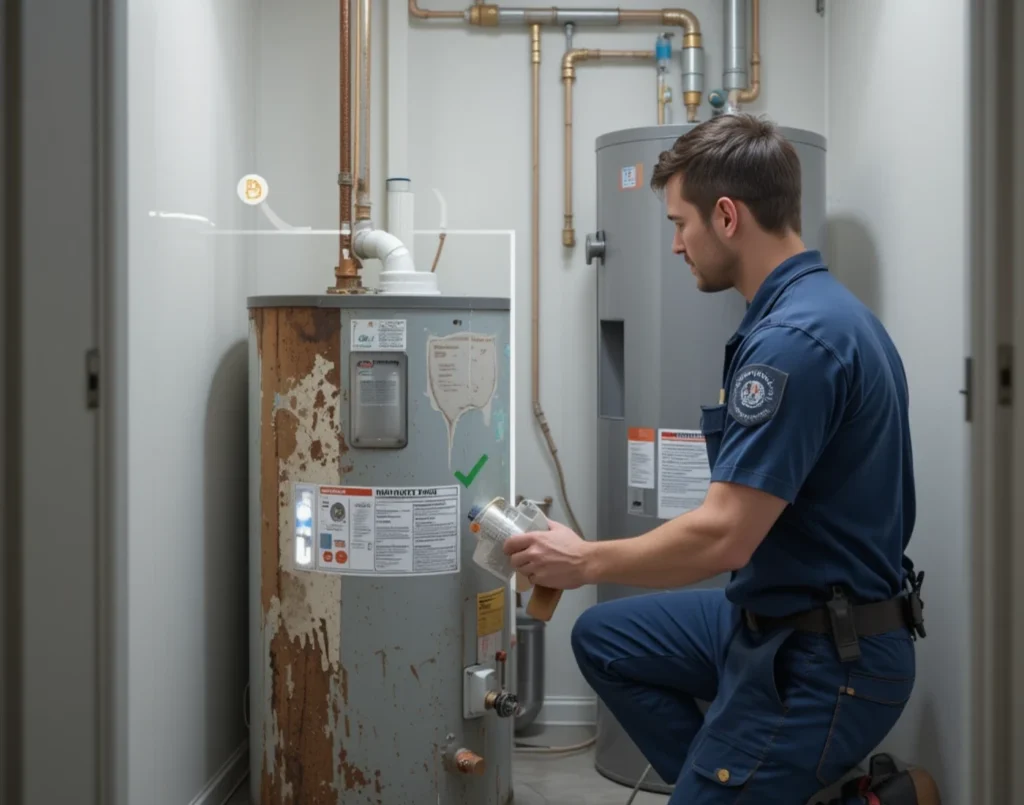
Modern Plumbing Material Options
Copper Piping
- Known for exceptional durability and natural resistance to bacteria.
- Lifespan ranges from 50 to 70 years, maintaining steady performance over time.
- Works efficiently in various climates, although acidic water can cause wear.
- More expensive initially than plastic piping, but delivers long-term reliability and value.
CPVC (Chlorinated Polyvinyl Chloride)
- Offers strong corrosion resistance and performs well with hot water systems.
- Lighter than metal pipes, they are easier and cheaper to install. This is especially true during big renovations.
- CPVC doesn’t conduct electricity. This helps lower the risk of electrical hazards in plumbing.
- Offers better insulation than metal. This helps keep water hot and lower energy costs.
Other Compatible Materials
PEX piping offers several advantages for modern plumbing systems. Its flexible design allows easy navigation through tight spaces, corners, and obstacles without the need for extra fittings. PEX is highly effective in cold weather and can expand slightly without cracking, reducing the risk of burst pipes during freezing conditions. Made from cross-linked polyethene, PEX piping works efficiently for both hot and cold water lines, making it a perfect choice for whole-house plumbing. Additionally, PEX is more cost-effective than traditional materials and requires minimal maintenance, offering long-term reliability. This combination of benefits makes PEX piping a popular choice for new homes and renovations.
Steps to Upgrade Your Plumbing System
Assessing the Needs
Expert plumbers can look at your system and find areas that need improvement. They use special cameras and pressure tests to check pipe condition. This method avoids damaging the pipes.
- Schedule comprehensive inspections that include water pressure testing and pipe condition assessment
- Prioritise critical areas like main water lines and connections to expensive appliances
Hiring Professionals
Licensed plumbers ensure code compliance and proper installation techniques. They offer warranties on their work. They can also manage permit requirements for big renovations. Research local contractors thoroughly and obtain multiple quotes for comparison. Check references, insurance coverage, and professional certifications before making your final selection.
Planning the Upgrade
Coordinating plumbing upgrades with other home improvements maximises efficiency and minimises disruption. Plan renovations for when you’re away or can move temporarily. This will help reduce inconvenience.
- Create realistic timelines that account for permit approval and material delivery
- Plan temporary water arrangements if main lines require replacement
- Coordinate with other trades if electrical or structural work is needed
- Budget for unexpected issues that may arise during installation
Execution and Installation
Professional installation ensures your new system meets local building codes and manufacturer specifications. Quality workmanship prevents future problems and maximises your investment’s return. Modern installation techniques minimise disruption to walls and flooring. Experienced contractors work efficiently while maintaining clean, safe work areas throughout the project.
Regular Maintenance
New plumbing systems require periodic maintenance to ensure optimal performance. Schedule annual inspections and address minor issues before they become major problems. Water quality testing helps identify potential issues early. Regular maintenance extends system life and maintains warranty coverage on new installations.
Pro Tips / Safety Advice
Always turn off the water supply before doing any plumbing work, no matter how small. Ensure everyone in the family knows where the main water shut-off valve is. Mark it clearly for easy visibility.
- Install water leak detectors near water heaters, washing machines, and under sinks
- Test shut-off valves annually to ensure they function when needed
- Maintain consistent indoor temperatures to prevent pipe freezing
- Know your limits and call professionals for complex repairs
Avoid chemical drain cleaners that can damage pipes and create toxic fumes. Use enzymatic cleaners or tools like plungers and drain snakes for regular maintenance.
Final Thoughts / Encouragement
Upgrading your plumbing system is a smart investment. It boosts your home’s value and keeps your family comfortable. Label your main water shut-off valve clearly. This way, everyone in the family will know where it is.
Don’t wait for emergency situations to force hasty decisions. Taking proactive steps now gives you control over timing, costs, and material choices. Your future self will appreciate it if you tackle these issues now. Don’t wait until they turn into urgent problems.
Modern plumbing technology offers reliability and efficiency that older systems simply cannot match. Plan your upgrade today. Enjoy the peace of mind that a reliable plumbing system brings.
Frequently Asked Questions
1. What do I have to look for in a plumbing service?
Look for a licensed, insured, and experienced plumber with good reviews. Ensure they offer warranties, clear communication, and transparent pricing.
2. How do I know if my plumbing is up to modern building codes?
Hire a licensed plumber to inspect your system. They’ll ensure your pipes, vents, and water heater comply with local building codes.
3. How do you maintain a plumbing system at home?
Regularly check for leaks, clean drains, and inspect water pressure. Schedule professional inspections every few years for optimal performance.
4. Why are plumbing services expensive?
Plumbing services are costly due to specialised labour, tools, permits, and materials. Emergency services or after-hours work also increase costs.
5. What should I expect during a plumbing inspection?
The plumber will check pipes, fixtures, and appliances for leaks, corrosion, or water pressure issues, and advise on necessary repairs or upgrades.

